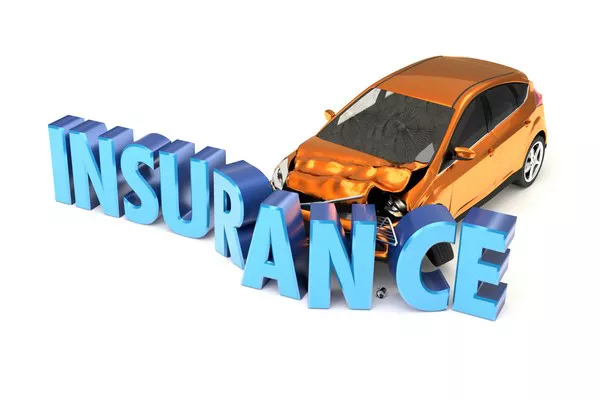Recreational Vehicle (RV) ownership provides the freedom to travel and live on the road, but it also comes with unique insurance needs. Whether you use your RV occasionally or live in it full-time, having the right insurance coverage is crucial for protecting your investment and ensuring peace of mind. This comprehensive guide explores the different types of RV insurance, coverage options, state requirements, cost factors, and more to help you choose the best RV insurance for your needs.
Types of RV Insurance
RV insurance is not one-size-fits-all. Depending on how you use your RV, different types of insurance are available:
Full-Time RV Insurance: Designed for those who live in their RVs full-time, this type of insurance provides coverage similar to homeowners insurance, including liability, personal belongings, and emergency expenses.
Part-Time RV Insurance: Suitable for occasional RV users, this type of insurance typically offers similar coverage to auto insurance, protecting against accidents, theft, and other risks during trips.
Stationary RV Insurance: For RVs used as a permanent residence but not driven frequently, this insurance covers similar risks to homeowners insurance, including liability and property damage.
Vacation Liability Insurance: An add-on for part-time users, providing liability coverage while the RV is parked at a campsite or other temporary location.
Choosing the right type of insurance depends on your lifestyle and how you use your RV.
Coverage Options
Understanding the different coverage options is essential to ensure comprehensive protection. Here are the main types of coverage available for RV insurance:
Liability Insurance: Covers bodily injury and property damage you may cause to others in an accident. It’s required by law in most states.
Collision Insurance: Pays for damage to your RV resulting from a collision with another vehicle or object, regardless of fault.
Comprehensive Insurance: Protects against non-collision-related damage, such as theft, fire, vandalism, and natural disasters.
Uninsured/Underinsured Motorist Coverage: Covers medical expenses and property damage if you’re involved in an accident with an uninsured or underinsured driver.
Medical Payments Coverage: Pays for medical expenses for you and your passengers regardless of who is at fault in an accident.
Personal Property Coverage: Protects personal belongings inside the RV, such as electronics, clothing, and kitchen appliances.
Roadside Assistance: Provides services like towing, tire changes, and battery jump-starts if your RV breaks down.
Emergency Expenses Coverage: Covers costs for temporary housing and transportation if your RV becomes uninhabitable due to a covered event.
Selecting the right combination of these coverage options can help ensure you’re fully protected on the road.
State Requirements
Insurance requirements for RVs vary by state. It’s essential to understand the specific requirements in your state to ensure compliance and adequate protection. Generally, states require at least liability insurance, but the minimum coverage limits and additional requirements can differ. Here are a few examples:
California: Requires liability insurance with minimum limits of $15,000 per person for bodily injury, $30,000 per accident, and $5,000 for property damage.
Florida: Requires $10,000 in personal injury protection (PIP) and $10,000 in property damage liability (PDL) for motorhomes.
Texas: Requires liability insurance with minimum limits of $30,000 per person, $60,000 per accident for bodily injury, and $25,000 for property damage.
Check with your state’s Department of Motor Vehicles (DMV) or insurance department to verify the specific requirements for your RV.
see also: What Does Rv Comprehensive Insurance Cover
Cost Factors
Several factors influence the cost of RV insurance, including:
Type and Age of the RV: Newer and more expensive RVs typically cost more to insure due to higher repair and replacement costs.
Usage Frequency: Full-time RVers usually pay more for insurance than part-time users because the risk of damage or accidents is higher.
Driver’s History: A clean driving record can lower your premiums, while a history of accidents or violations can increase costs.
Location: The area where you store and use your RV can affect rates. High-crime areas or regions prone to natural disasters may result in higher premiums.
Coverage Limits and Deductibles: Higher coverage limits and lower deductibles typically result in higher premiums.
Understanding these factors can help you find ways to manage and potentially reduce your insurance costs.
Discounts and Savings
Insurance providers often offer various discounts to help lower your premiums. Some common discounts include:
Multi-Policy Discount: Save by bundling your RV insurance with other policies, such as auto or home insurance.
Safe Driver Discount: Earn a discount for maintaining a clean driving record.
Paid-in-Full Discount: Receive a discount for paying your annual premium in full rather than in monthly installments.
Anti-Theft Discount: Install anti-theft devices in your RV to qualify for savings.
Good Sam Club Discount: Members of RV clubs, like the Good Sam Club, may be eligible for special discounts.
Ask your insurance provider about available discounts and take advantage of those for which you qualify.
Insurance Company Reviews
Selecting the best RV insurance provider involves considering their policy offerings, customer service, and claims process. Here are reviews of some top companies:
Progressive: Known for comprehensive coverage options and competitive rates, Progressive offers a wide range of add-ons and discounts. Customers appreciate their responsive customer service and easy claims process.
GEICO: Offers affordable rates and extensive coverage options, including specialized RV insurance policies. GEICO is praised for its user-friendly online tools and efficient claims handling.
National General: Specializes in RV insurance, providing tailored coverage options for full-time and part-time users. National General is highly regarded for its knowledgeable agents and comprehensive policies.
State Farm: Offers robust coverage and numerous discounts, with a strong reputation for excellent customer service and a straightforward claims process.
Comparing these providers can help you find the best policy for your needs.
Add-Ons and Extras
Additional coverage options and add-ons can enhance your RV insurance policy. Some valuable extras include:
Roadside Assistance: Provides peace of mind with services like towing, fuel delivery, and tire changes.
Personal Effects Coverage: Protects personal belongings inside the RV, such as electronics, clothing, and kitchen appliances.
Vacation Liability: Offers liability coverage when the RV is parked at a campsite or other temporary location.
Full-Timer Coverage: For those who live in their RVs full-time, this coverage includes liability and emergency expense protection.
Emergency Expense Coverage: Covers costs for temporary housing and transportation if your RV becomes uninhabitable due to a covered event.
Consider these add-ons to customize your policy for your specific needs.
see also: How Much Is Insurance On An Rv Trailer
Claims Process
Understanding the claims process is essential for ensuring a smooth and efficient resolution if an incident occurs. Here’s a typical process for filing a claim:
Report the Incident: Contact your insurance provider as soon as possible to report the incident and provide details.
Documentation: Gather and submit necessary documentation, such as photos of the damage, police reports, and receipts for repairs or medical expenses.
Claim Review: The insurance company will review your claim and may send an adjuster to assess the damage.
Settlement: Once the claim is approved, the insurance company will issue a payment based on your policy’s coverage limits and deductibles.
Timely and accurate reporting, along with thorough documentation, can expedite the claims process and ensure you receive the compensation you need.
Conclusion
Selecting the best RV insurance involves understanding the different types of coverage, assessing your specific needs, and comparing policies from various providers. By considering factors such as coverage options, state requirements, cost factors, discounts, and customer reviews, you can find the right policy to protect your RV and enjoy your travels with peace of mind. Whether you are a full-time RVer or an occasional traveler, having the right insurance coverage is essential for safeguarding your investment and ensuring a worry-free journey.
[inline_related_posts title=”You Might Be Interested In” title_align=”left” style=”list” number=”6″ align=”none” ids=”1869,2231,1822″ by=”categories” orderby=”rand” order=”DESC” hide_thumb=”no” thumb_right=”no” views=”no” date=”yes” grid_columns=”2″ post_type=”” tax=””]




















